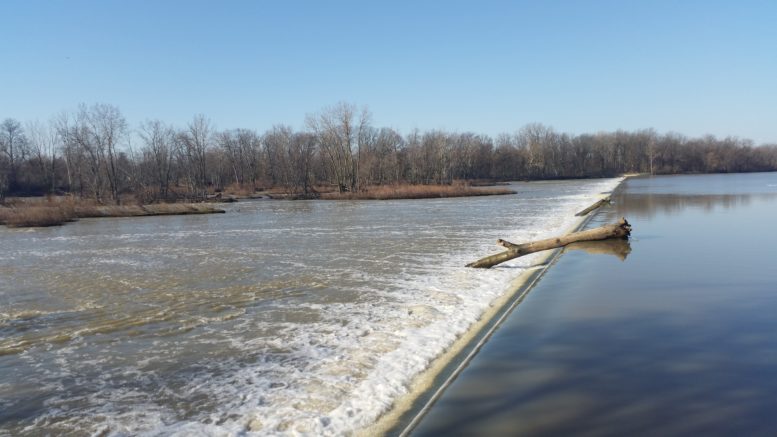By JAN LARSON McLAUGHLIN
BG Independent News
It’s that time of year, when the recipe for algal blooms starts cooking in the Maumee River. Spring rains run nutrients from soil into waterways and the sun’s rays warm up the water to create algal blooms.
“All those ingredients in the water that promote algae growth start to happen,” said Brian O’Connell, utilities director for the city of Bowling Green.
Last week, an algal bloom in the Maumee River near Defiance’s water treatment plant prompted a “no contact” advisory. Defiance is located upriver from Bowling Green’s water intake which sits between Grand Rapids and Waterville.
“Swimming and wading in the Maumee River is not recommended for children, pregnant or nursing women, those with certain medical conditions and pets,” a Defiance news release stated, according to the city’s newspaper.
But Defiance officials said the drinking water supply was safe. The water is currently being drawn out of the city’s reservoir, not the river, they reported. And water from the reservoir had been tested, showing safe levels.
Bowling Green’s drinking water is also safe despite algal blooms in the river, according O’Connell.
Bowling Green draws its water from the Maumee River near its West River Road plant, and pumps it into a reservoir where it is treated for any algal blooms. That is just the first step, O’Connell explained earlier this week.
“To top that off, there’s a small UV light system,” he said, and then chlorine treatment just in case anything slips past the processes.
“Our finished water samples have always shown a ‘no-detect,’” level of algae, O’Connell said.
Throughout the treatment process, the water is repeatedly tested.
“We, like every other plant, are doing the required sampling on the raw water side,” he explained. Then the testing is conducted again on the treatment side.
The city’s plant has not yet experienced a level of algal blooms that it can’t effectively treat, he said.
“The harmful algae has never got through the system,” O’Connell said.

